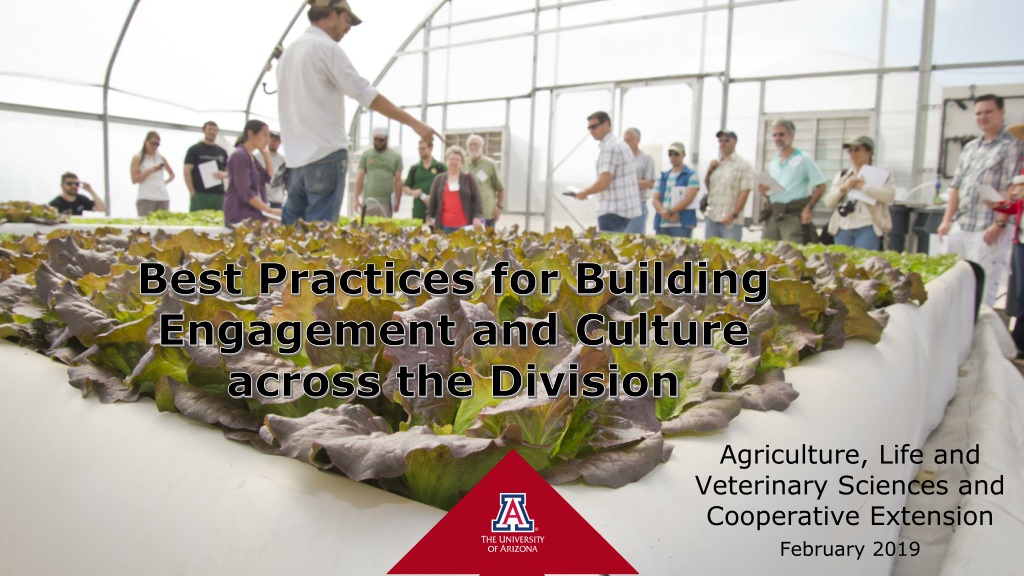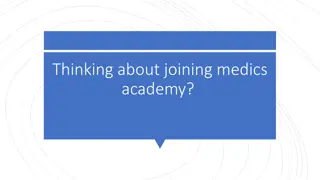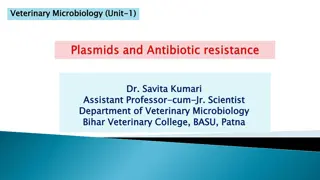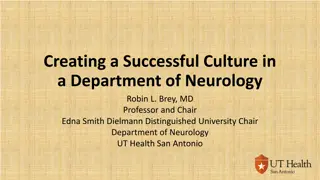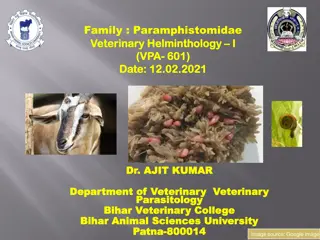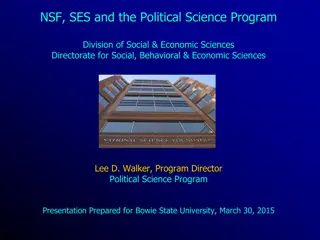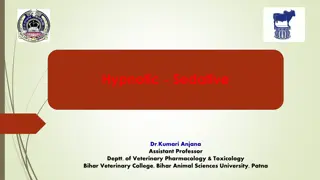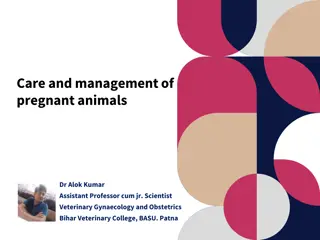Building Engagement and Culture in Agriculture & Veterinary Sciences
Explore best practices for fostering engagement and cultivating a positive culture in the Division of Agriculture, Life, Veterinary Sciences, and Cooperative Extension. Learn from unit leaders about communication, visibility, socialization, and innovation to create a thriving environment. Encourage open discussions, accessibility, team social events, and a culture that embraces innovation and smart risk-taking.
Download Presentation

Please find below an Image/Link to download the presentation.
The content on the website is provided AS IS for your information and personal use only. It may not be sold, licensed, or shared on other websites without obtaining consent from the author. Download presentation by click this link. If you encounter any issues during the download, it is possible that the publisher has removed the file from their server.
E N D
Presentation Transcript
Best Practices for Building Engagement and Culture across the Division Agriculture, Life and Veterinary Sciences and Cooperative Extension February 2019
Process Following is a summary of conversations and best practices gathered from unit leaders within the division. The list is not ordered in terms of priority. Unit leaders are encouraged to learn from one another. Please implement what works and share your examples with one another. 2
1. Talk about it Talking about the culture you want brings it to the forefront. Communicate that each of us is responsible for shaping the culture as much as those in formal leadership roles. Your colleagues said they: Discuss aspirational culture goals on a regular basis in unit/faculty meetings Ask what s working and what can be improved Ask for solutions to issues, not just that it isn't working see best practice #6 Communicate issues actively and consistently Match information to the appropriate audience, don't just email blast all Promote trust through transparency, accountability, and communication Example: Nutritional Sciences host a Rant and Rave session once a quarter in unit meetings 3
2. Be Visible and Accessible Open door policies show people that you care about them and are interested in what is going on Your colleagues said they: Let [the folks in my unit] see me Have an open door policy (50% of the leaders interviewed said they had this) Example: As a result of his 5 year review, Dean Burgess schedules regular walkabouts throughout our organization and tweets about them 4
3. Socialize It doesn t always have to be about work: Taking the team out for lunch or setting up informal get-together builds camaraderie Your colleagues said they: Faculty buy breakfast for staff on Administrative Professionals Day. It's not just about the faculty. Staff deserve connection to the unit too. Took their Research faculty out for a 4 hour happy hour (after work of course) Host socials 2x a month on an informal basis Host 1-2 holiday activities per year Eat lunch with faculty (taking 2-3 out at a time): "How's your research going?" "How can I support you better?" Host a Friday lunch at the start of the semester Have events/potlucks for noteworthy occasions (baby showers, retirements, etc.) Host retreats (like Kartchner Caverns) and an annual fall picnic BBQ at Reid Park Example: Plant Sciences hosts an all-school holiday party in Forbes lobby each year 5
4. Encourage Innovation Reward smart risk taking, even when the outcomes are not successful Your colleagues said they: Encourage entrepreneurial behavior (e.g. Mediterranean Diet in Italy) by encouraging risk taking and exploration and making funding available Challenge everyone to partner across silos; talk about projects and ventures during group meetings or coaching/mentoring sessions Invite staff in vision and mission activities alongside faculty Example: ACBS initiated the MS in Animal Biomedical Industry; enrollments were lower than expected, but this is an example of a unit taking a smart risk based on student demand. Kudos to ACBS! 6
5. Make it Welcoming for All Diversity is being invited to the dance; Inclusion is being asked to dance. Jesus Trevino, former Vice Provost for Inclusive Excellence and Senior Diversity Officer Your colleagues said they: Have an International Student Webpage Listen to and respect all opinions; take time to thank people for their contributions it will make them more willing to share in the future; nip disrespectful commentary in the bud Have candid conversations about diversity led by knowledgeable colleagues Expect professional courtesy and intervene when it isn't given: "we may not always agree, but we have to support one another and not undermine each other Read about an example of a lack of courtesy given to Chinese students at Duke University CALS Communication Values ALVSCE Statement on Collegiality Example: SNRE hosted a panel (composed of diversity council members and diversity leaders at UA) discussion about diversity with faculty, staff, and students in field-intensive science disciplines 7
6. Listen to, and more importantly, ADDRESS concerns Addressing concerns (even the little ones) fosters trust and demonstrates reliability Your colleagues said they: Create ad hoc committees to address thematic issues and take tangible action in those areas Deal with problems immediately and openly (with the exception of personnel issues) by communicating back to the group/stakeholders what was done about the problem Take feedback seriously; don t dismiss things that you don t personally think is a problem, and work to address it Actively seek out and listen to what s going on; sometimes a lack of negative feedback is not a good thing, but rather indicates a lack of trust that things will be acted upon or that they won t be retaliated against share vulnerability as a leader (e.g. I m not sure how to fix this, what are your ideas? ) Example: Dean sent out a letter about all factors that affect compensation based on feedback from a meeting regarding the 2018 Employee Engagement Survey 8
7. Onboard Effectively Starting a new job is exciting and terrifying; to reduce uncertainty and ensure people feel welcome to their new team and excited about their new role, check in with them periodically, assign them a buddy or mentor, take them out for lunch or have a celebration Your colleagues said they: Personally take new folks around the worksite Ensure supervisors discuss their expectations on performance within the first month of employment Check in 3-6 months after hire to see how things are going and what questions, suggestions, or concerns new hires have Reinforce the mission/purpose: what matters to us is taking care of students Example: Introduce them to the mission and structure of the division through the onboarding video 9
8. Mentor & Provide Professional Development Having someone to go to, especially when you re new, helps new hires navigate Getting better at something is inherently engaging, people have a drive to master new skills or improve Your colleagues said they: Match new hires with an experienced person (or people) Connect new Extension faculty with a mentor outside the county, but within Extension, that they can talk to on a regular basis Connect all faculty with mentors: put the onus on the mentor to initiate the check-ins (new people may feel like a burden on mentors and may not initiate); give structure to mentors on how to be effective; choose your best team players and people with traits you want your new folks to emulate to be mentors; ensure mentors get the proper recognition and prestige for filling this important role Give them clear targets of what it takes to achieve tenure/continuing status Provide recommendations about professional development opportunities to others, encourage their attendance, and financially support them Provide $2,500 to all faculty to use however they deem appropriate: classroom use/professional development/research 10
9. Provide Recognition/Feedback Recognition and feedback are vital for all employees engagement. Recognizing folks in the way that they prefer (public/private/handwritten note/letter from Dean) is motivational. Your colleagues said they: Take the time to think about what award each employee deserves and coordinates nominations Acknowledge the good things Make sure folks know how much they re appreciated by giving heartfelt, spontaneous thanks for their contributions Gather peer feedback, regardless of whether they re faculty or staff, and deliver it to the individual in a supportive way Example: Write a handwritten note giving specific thanks for a recent accomplishment/behavior 11
If you do not develop your culture it will develop itself. Culture doesn t happen by accident and if it does, you re taking a risk. Monique Winston CEO Optima Lender Services
Further Reading/Resources Resources UA Leads Series (all employees): https://olod.arizona.edu/ua-leads Leadership Development Series (managers and supervisors): https://olod.arizona.edu/supervisors Future Leaders Workshops: https://diversity.arizona.edu/future-leaders-workshops CALS Diversity and Inclusiveness Council events: https://cals.arizona.edu/about/cals-d&i/events Set up Leadership and Executive Coaching meetings: UA HR Leadership and Executive Coaching Management in Action Program (MAP): http://management.arizona.edu/about-map Academic Leadership Institute (ALI): http://ali.arizona.edu/ Books Drive Dan Pink: see this video for a short summary (run time 10:47) Radical Candor Kim Scott: see this video for a short summary (run time 21:20) Work Rules! Laszlo Bock The Five Dysfunctions of a Team Patrick Lencioni The Culture Code Daniel Coyle Turn the Ship Around! L. David Marquet Creativity, Inc. Ed Catmull 13
